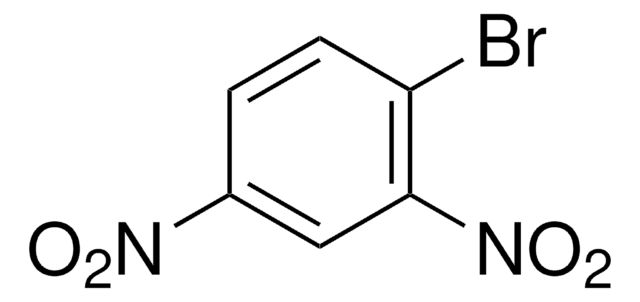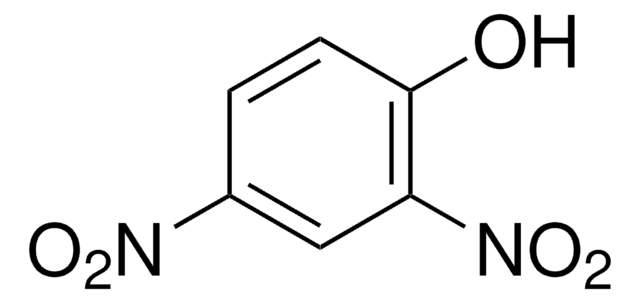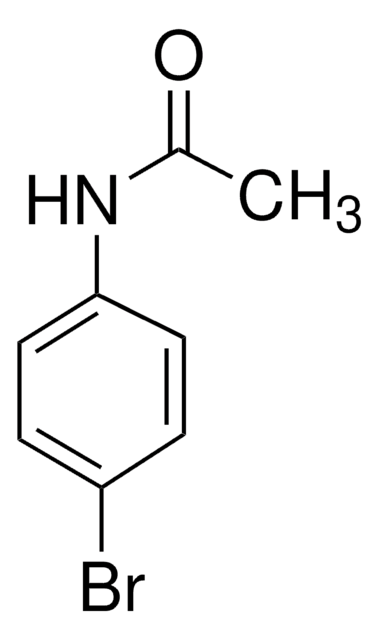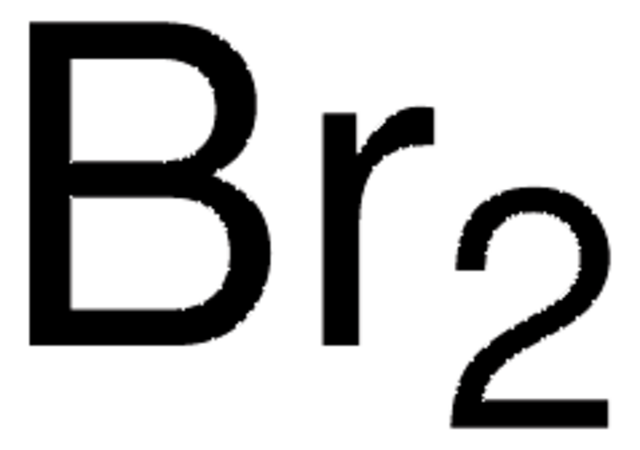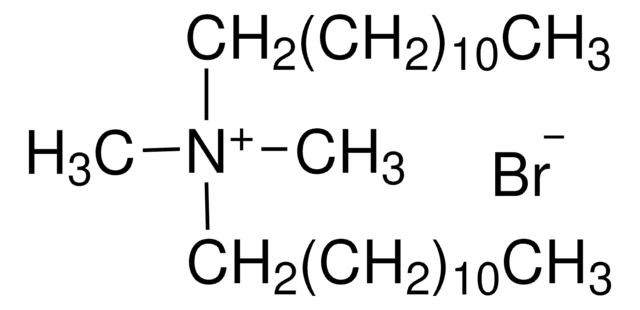117994
2,4-Dinitrodiphenylamine
98%
Synonym(s):
2,4-Dinitro-N-phenylaniline
Sign Into View Organizational & Contract Pricing
All Photos(1)
About This Item
Linear Formula:
(O2N)2C6H3NHC6H5
CAS Number:
Molecular Weight:
259.22
Beilstein:
8588595
EC Number:
MDL number:
UNSPSC Code:
12352100
PubChem Substance ID:
Recommended Products
Assay
98%
mp
159-161 °C (lit.)
solubility
acetone: soluble 25 mg/mL, clear, orange to red
SMILES string
[O-][N+](=O)c1ccc(Nc2ccccc2)c(c1)[N+]([O-])=O
InChI
1S/C12H9N3O4/c16-14(17)10-6-7-11(12(8-10)15(18)19)13-9-4-2-1-3-5-9/h1-8,13H
InChI key
RHTVQEPJVKUMPI-UHFFFAOYSA-N
Looking for similar products? Visit Product Comparison Guide
General description
2,4-Dinitrodiphenylamine forms an efficient anionic chromogenic chemosensor. It was anaerobically metabolized in sediment-water batch enrichments inoculated with mud from the German North Sea coast.
Signal Word
Warning
Hazard Statements
Precautionary Statements
Hazard Classifications
Eye Irrit. 2 - Skin Irrit. 2 - STOT SE 3
Target Organs
Respiratory system
Storage Class Code
11 - Combustible Solids
WGK
WGK 3
Flash Point(F)
Not applicable
Flash Point(C)
Not applicable
Personal Protective Equipment
dust mask type N95 (US), Eyeshields, Gloves
Choose from one of the most recent versions:
Already Own This Product?
Find documentation for the products that you have recently purchased in the Document Library.
Vanderléia Gava Marini et al.
Spectrochimica acta. Part A, Molecular and biomolecular spectroscopy, 75(2), 799-806 (2010-01-01)
Solutions of 2,4-dinitrodiphenylamine (1) in dimethylsulfoxide (DMSO) are colorless but upon deprotonation they become red. Addition of various anionic species (HSO(4)(-), H(2)PO(4)(-), NO(3)(-), CN(-), CH(3)COO(-), F(-), Cl(-), Br(-), and I(-)) to solutions of 1 revealed that only CN(-), F(-), CH(3)COO(-)
Kristen L Reese et al.
Forensic science international, 272, 16-27 (2017-01-16)
This work demonstrates a non-targeted mass spectrometry approach for identification of organic compounds in smokeless powders. Unburned powders were removed from various commercial ammunitions of different brand, primer composition, caliber, and age. The unburned powders and corresponding fired residues were
O Drzyzga et al.
Applied and environmental microbiology, 61(9), 3282-3287 (1995-09-01)
2-Nitrodiphenylamine, 4-nitrodiphenylamine, and 2,4-dinitrodiphenylamine were anaerobically metabolized in sediment-water batch enrichments inoculated with mud from the German North Sea coast. The first intermediate in 2,4-dinitrodiphenylamine degradation was 2-amino-4-nitrodiphenylamine, which appeared in large (nearly stoichiometric) amounts before being completely reduced to
Djaafar Siddiq Karahacane et al.
Forensic science international, 301, 129-136 (2019-06-04)
The detection and analysis of gunshot residues expelled during the discharge of the weapon play a potential role in criminal investigations. In this work, organic gunshot residues produced by using automatic rifle Kalashnikov caliber: 7.62×39mm and semi-automatic pistol Makarov caliber:
Zuriñe Abrego et al.
The Analyst, 139(23), 6232-6241 (2014-10-11)
A method based on scanning laser ablation and inductively coupled plasma-mass spectrometry (SLA-ICPMS) and Raman micro-spectroscopy for the detection and identification of compounds consistent with gunshot residue particles (GSR) has been developed. The method has been applied to the characterization
Our team of scientists has experience in all areas of research including Life Science, Material Science, Chemical Synthesis, Chromatography, Analytical and many others.
Contact Technical Service

